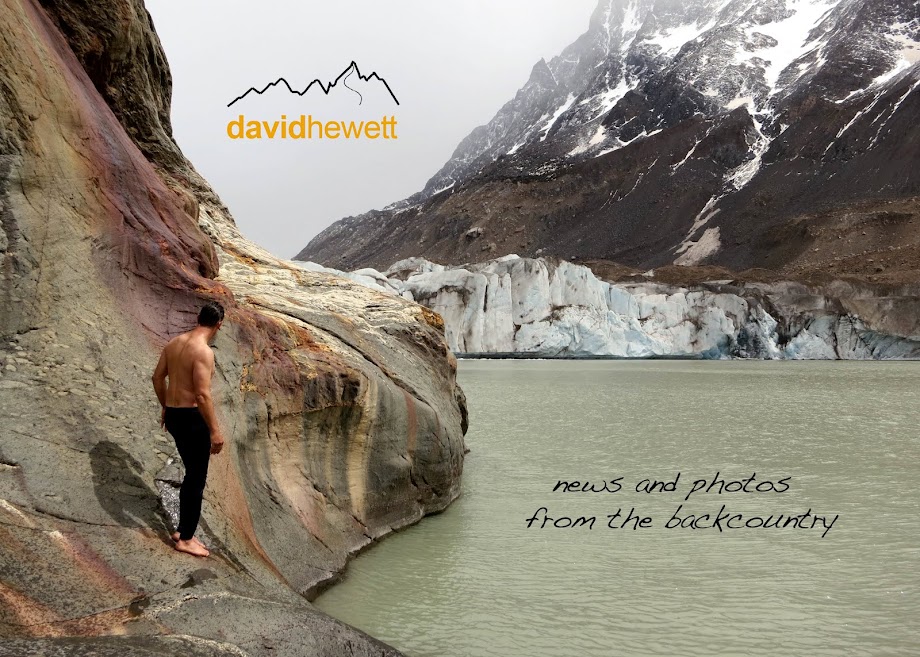Skinny Mini (photo by Lindsey Clark)
In the last days of April, 2011, I attended a ski mountaineering camp with Sawtooth Mountain Guides near Stanley, Idaho in the Sawtooth Wilderness with my friend Brent Hutcheson and five other participants, one of whom was a professional freelance photographer and writer. The trip was featured as the cover story in the December issue of Sierra Magazine with the tag: How To Not Die Doing This! The camp lasted four days, and included clinics on avalanche rescue, backcountry travel, improvised sled construction, self-arrest, anchor-building, rappeling, belaying, and skiing on belay. We stayed in cozy backcountry yurts at treeline near the base of Thompson and Williams peaks, supported by three highly competent, intelligent, and friendly guides. The yurts, warmed by wood stove, had no running water or electricity, but light and radio communication was supplied, at least for a few hours a day, by remote solar panels. Lucky for us (or unlucky, depending on your perspective), a late winter storm hit just as we broke trail, dumping upwards of eight to ten inches of new snow, the catalyst for at least three significant avalanches that our group would later trigger (the largest one would take me for a ride). Happily, they were just surface slabs and ran at relatively low angles, so that nobody was buried or injured. At no time did we feel our safety had been compromised, as our guides were rigorous in their stability assessment, route selection, and spacing, and they exuded confidence. Indeed, we were well cared for: firewood was cut, coffee brewed, breakfast and dinner prepared for us every morning and evening, and at the end of each day's tour, where we would debrief in the comfort of the yurt, snacks and warm drinks awaited us. We hiked more than a thousand vertical meters a day, skiied some of the most aesthetic and challenging lines in the Sawtooths (in mid-winter powder conditions!), and learned a great deal about managing danger in the backcountry. It was a poor man's heli trip without the helicopter, and without the hand-holding. More photos (courtesy of Aaron Teasdale):





















